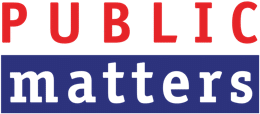A ‘ballot agreement’ as a lobby tool?
On 3 March 2020, the leaders of the three biggest left-wing parties SP (Socialist Party), PvdA (Social Democrats) and GroenLinks (Greens) stood on stage together facing a big crowd in cultural hub the Tolhuistuin in Amsterdam. They called for a left-wing cooperation during the parliamentary budget negotiations in the coming fall. Subsequently, GroenLinks and PvdA appeared to seriously consider entering the 2021 General Elections with a joint candidate for the premiership and several common goals. Would it come to a ballot agreement?
Not a crazy thought: this is how Joop den Uyl (former PM, PvdA) came to power through ‘Turning Point 72’. A ballot agreement by which PvdA, D66 (Liberal Democrats) and the PPR (a predecessor of GroenLinks) joined forces. The expectations for a new left-wing alliance were therefore raised high over the past year. But where GroenLinks-party leader Jesse Klaver explicitly reached out almost a year later to the PvdA, SP, and D66, they, on second thought, did not turn out to be so keen on a left-wing pact after all. SP-party leader Lilian Marijnissen was expressing willingness to work together with ChristenUnie (Christian Conservative) and CDA (Christian Democorats), D66-party leader Sigrid Kaag never intended to step in, and PvdA-party leader Lilianne Ploumen in turn didn’t want to cooperate with D66. Klaver’s call was ignored, and the silent hope of a great number of voters on a left-wing alliance was dashed.
But also on a smaller scale, political parties are calling for agreements on specific issues and interests. Leading up to the General Elections several initiatives were announced. D66 advocated for a ‘tiny-ballot agreement’ for a railroad connection between Groningen and Lelystad (the Lelylijn), and ChristenUnie pleaded for an agreement to buy up debts of young people. For the first time, the interests of an entire region were established in a ballot agreement: several members of the House of Representatives from the east of the Netherlands declared in the Akte van Oost (the Act of the East) to commit to economic growth in this region.
However, ballot agreements are not used only for cooperation between political parties. They can be used as a lobby–tool too. To ensure that parties already commit to certain promises before the formation, for example. In the current election period the Digital Ballot Agreement came to pass, initiated by Amnesty International, Bits of Freedom, Open State Foundation and Waag. In this agreement parties promise to carry out stricter supervision on algorithms in response to the child benefits scandal, and insufficient resources for the Data Protection Authority to protect civilians. In addition, no less than 8 parties signed the Rainbow Ballot Agreement, in which they committed to concrete measures against discriminating violence against the LGBTQI-community and their acceptance at school. A group of development organizations also launched a ballot agreement for development aid. This calls for 0.7% of Gross National Product to be set aside annually in the state budget for development aid.
But how does such an agreement come about? We asked Mirthe de Boer from Cordaid, one of the initiators of the ballot agreement for development aid: “Four years ago we concluded a ballot agreement for the first time with the initiative ‘Turn the Trend’. The internationally agreed standard for development budget is 0.7% of GNP. The Netherlands adhered to this for a long time, but the trend was that this percentage was decreasing. All parties – except the VVD (Conservative Liberals) and right-wing parties – signed the initiative at the time.”
The question is whether such a ballot agreement leads to concrete results. De Boer: “In Cabinet Rutte III they did not reach the 0.7%, but they did add a net amount of budget. And during the budget debates several parties advocated for the standard to be met. This recent election period it was, therefore, again decided to launch a ballot agreement to really get to that 0.7% standard, after it turned out that many parties had also included it in their election programs. The signature is then mainly intended to commit parties to keeping their promise. The COVID-19 pandemic makes it harder to create momentum for such an agreement, because if you don’t have a physical moment, it feels more superficial. Fortunately, we still have the tweets.”
A ballot agreement works well as a lobby tool. Apart from the political and media-attention for a topic surrounding the launch and signing, political parties can be reminded and upheld to their election promises. In addition, it offers the possibility to continuously put issues and measures from the agreement on the agenda. Finally, the ballot agreement can serve as a starting point for actually implementing the proposed measures into policy. And so the signing of the agreement is not the end of the lobby, but rather the beginning.
A 'ballot agreement' offers the possibility to continuously put issues and measures from the agreement on the political agenda.
Public matters







